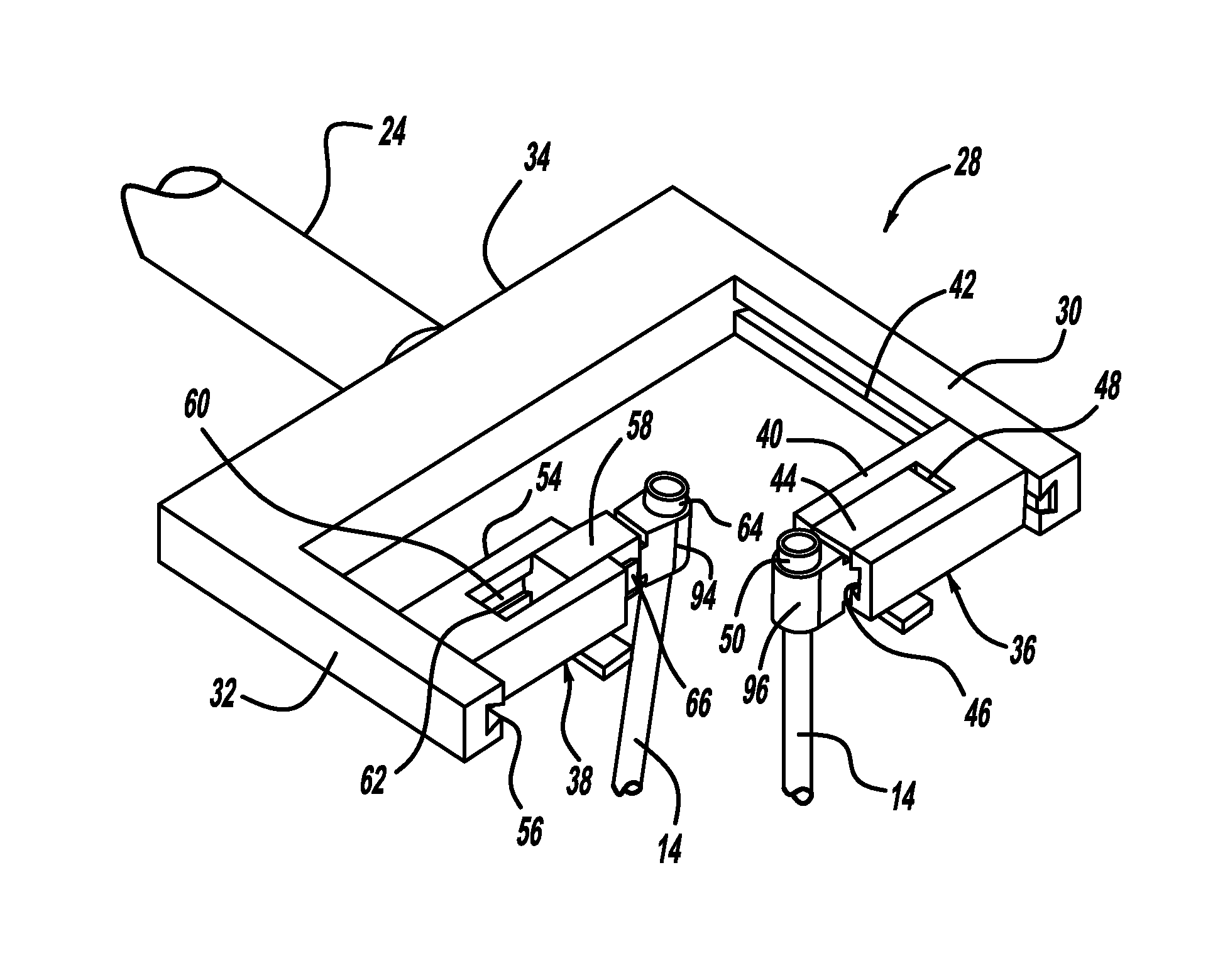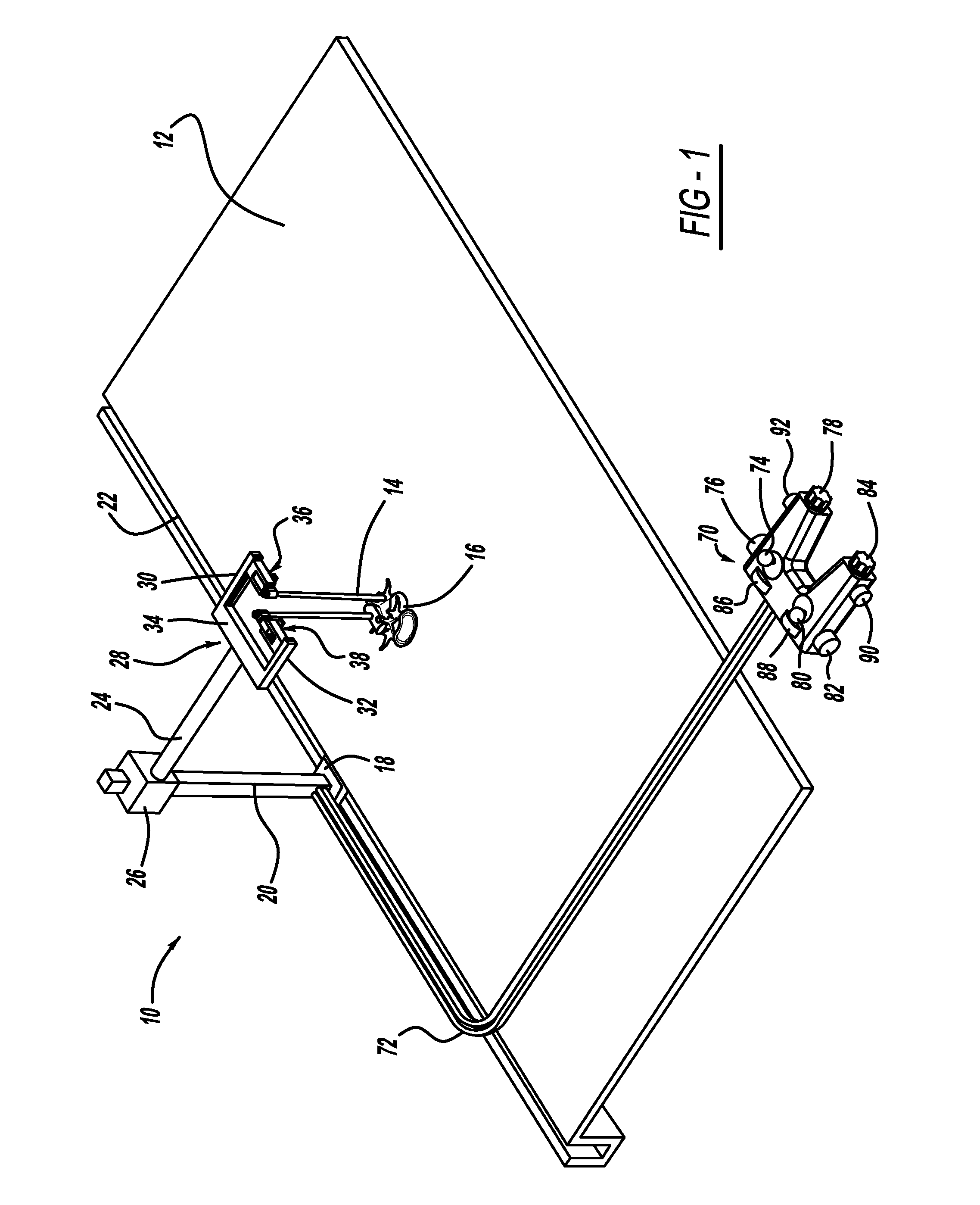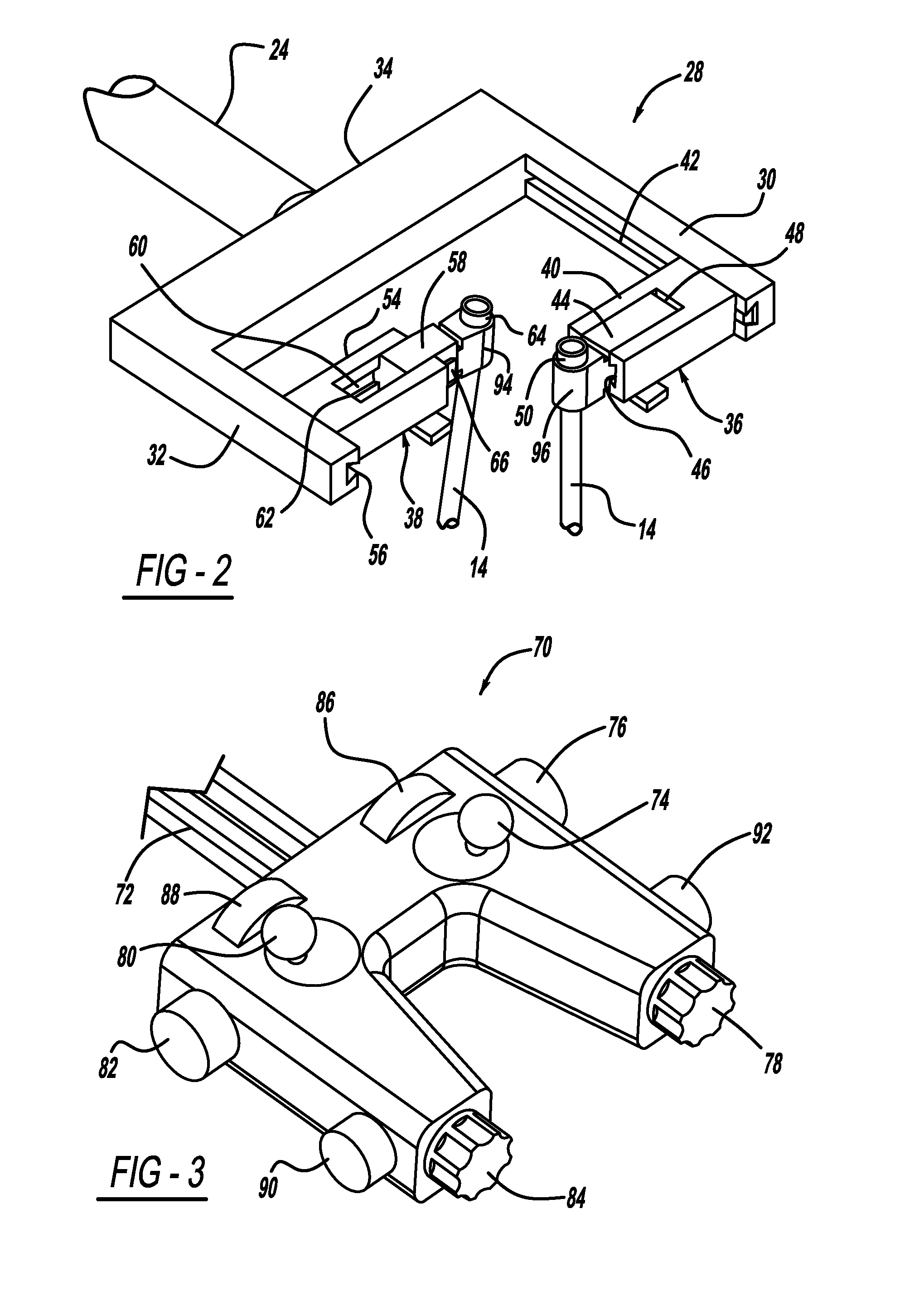Robotic surgical device implant system
a surgical instrument and robotic technology, applied in the field of robotic surgical device implant system, can solve the problems of more scarring, muscle atrophy and reduced function, and transitional syndrome leading to canal stenosis
- Summary
- Abstract
- Description
- Claims
- Application Information
AI Technical Summary
Benefits of technology
Problems solved by technology
Method used
Image
Examples
Embodiment Construction
[0020]The following discussion of the embodiments of the invention directed to a surgical device positioning system is merely exemplary in nature, and is in no way intended to limit the invention or its applications or uses. For example, the positioning system of the invention has particular application for positioning a surgical device or instrument during spinal surgery. However, as will be appreciated by those skilled in the art, the device positioning system may have other applications, both surgical and non-surgical.
[0021]The present invention discloses a surgical device positioning system that allows a surgeon to accurately and remotely position a surgical instrument or other device relative to a patient and to provide fluoroscopic images of the instrument without exposing the surgeon to radiation. The system can be used to percutaneously target the individual pedicles of vertebrae from a remote location so that the surgeon and operating personnel avoid fluoroscopic radiation ...
PUM
 Login to View More
Login to View More Abstract
Description
Claims
Application Information
 Login to View More
Login to View More - R&D
- Intellectual Property
- Life Sciences
- Materials
- Tech Scout
- Unparalleled Data Quality
- Higher Quality Content
- 60% Fewer Hallucinations
Browse by: Latest US Patents, China's latest patents, Technical Efficacy Thesaurus, Application Domain, Technology Topic, Popular Technical Reports.
© 2025 PatSnap. All rights reserved.Legal|Privacy policy|Modern Slavery Act Transparency Statement|Sitemap|About US| Contact US: help@patsnap.com



